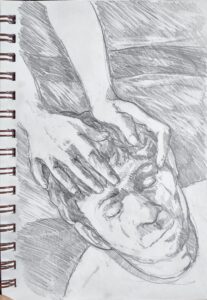
“I think with my hands, and it really cements my thoughts,” Theresa Vincent emailed me recently. She has a way with words; she’s the same person who told me a painting needs brides and bridesmaids.
I may be the only person in my church who draws, but I’m not alone in fussing while listening. There are occasionally people who knit, and lots of people who take notes. Whether they look back at them or not, writing notes results in better retention. More words are better than fewer, and writing by hand is better than tapping out notes in a phone or laptop.
Most importantly for us, drawing instead of writing results in even better memory retention. It doesn’t matter if what we’re drawing is ‘relevant’ or whether the pictures are objectively good.
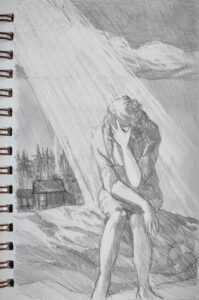
Take that, every teacher who disciplined a student for drawing in class! I sure had those teachers; they made school a misery for me. Fifty years later, I realize I was a deeply-traumatized kid who needed help, but that wasn’t happening back in the 1970s. All I had was my pencil, and school had no room for free thinkers.
Fast forward to the aughts, when my own kids were in school. You’d think it would have been better after thirty years of child psychology, but school then was even more rigid and more disciplined. I knew several kids who were disciplined for drawing in class, including my own.
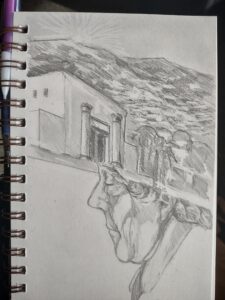
How does drawing help us remember?
Nobody knows precisely how this works, but it probably means that our moving hands help create new neural pathways to encode long-term memory. The brain-even the elderly one-continues to grow and mend itself. Even after great damage, like stroke or head injury, our brains make new neural pathways and alter existing ones. That’s how we adapt to new experiences and learn new information.
C. is a student in my Zoom brushwork class. She is 83 years old. The foolish might read that and think she’s an old lady taking art classes down at the senior center. They’d be all wrong. C. is a very serious painter, an excellent draftsman, and completely open to new ideas. Last week, I had my class do a small-brush exercise in the style of Les Nabis. It is difficult to give up the brushes you know and love, but C. embraced the challenge. And she crushed it.
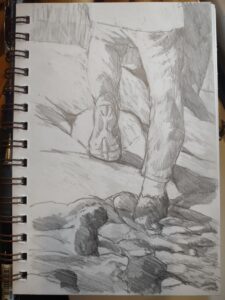
Obviously, it’s not drawing alone that keeps C. youthful. She sails, she travels, and she has good genes. But art has a big place in her life.
Our brains are not the only way we think. We have a complicated autonomic nervous system. The sympathetic nervous system activates our fight-or-flight response; the parasympathetic nervous system restores us to calm. Our enteric nervous system, which controls our gut (and thus our ‘gut responses’) can operate independently of our brains. And the cool thing is, we’re just beginning to understand how these systems all work together.
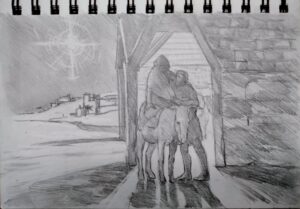
But they do, so it’s not unreasonable for Theresa to say she thinks with her hands. It might be quite literally true.
Reserve your spot now for a workshop in 2025:
- Advanced Plein Air Painting, Rockport, ME, July 7-11, 2025.
- Sea and Sky at Acadia National Park, August 3-8, 2025.
- Find Your Authentic Voice in Plein Air, Berkshires, MA, August 11-15, 2025.
- Immersive In-Person Fall Workshop, Rockport, ME, October 6-10, 2025.

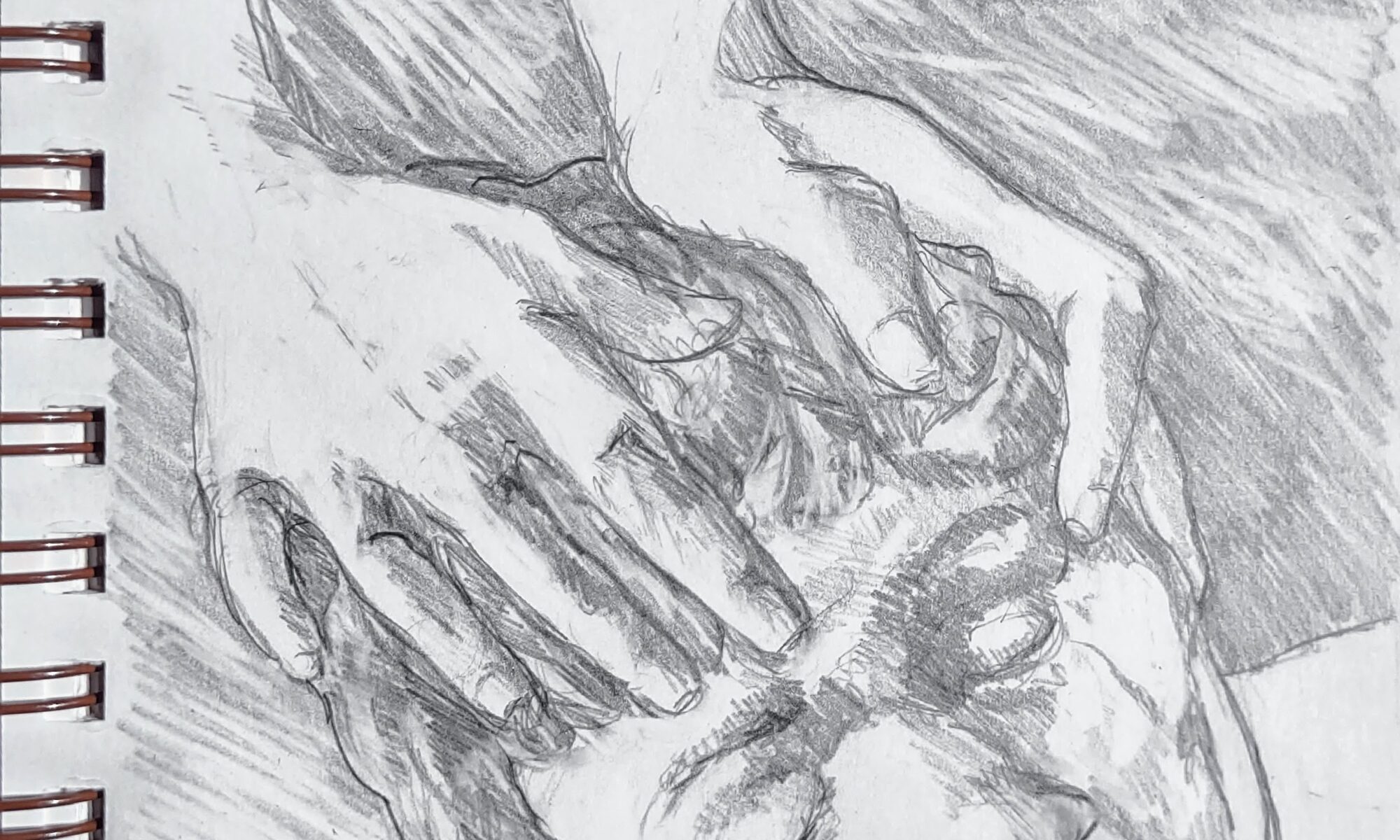
Have you thought about publishing your church drawings? They would inspire many people. C. Is also inspiring!!
I have, but I’m not sure in what sort of format, or what they would say. They’re all out there somewhere as Instagram posts.
Thank you for this refreshing and hopeful message!